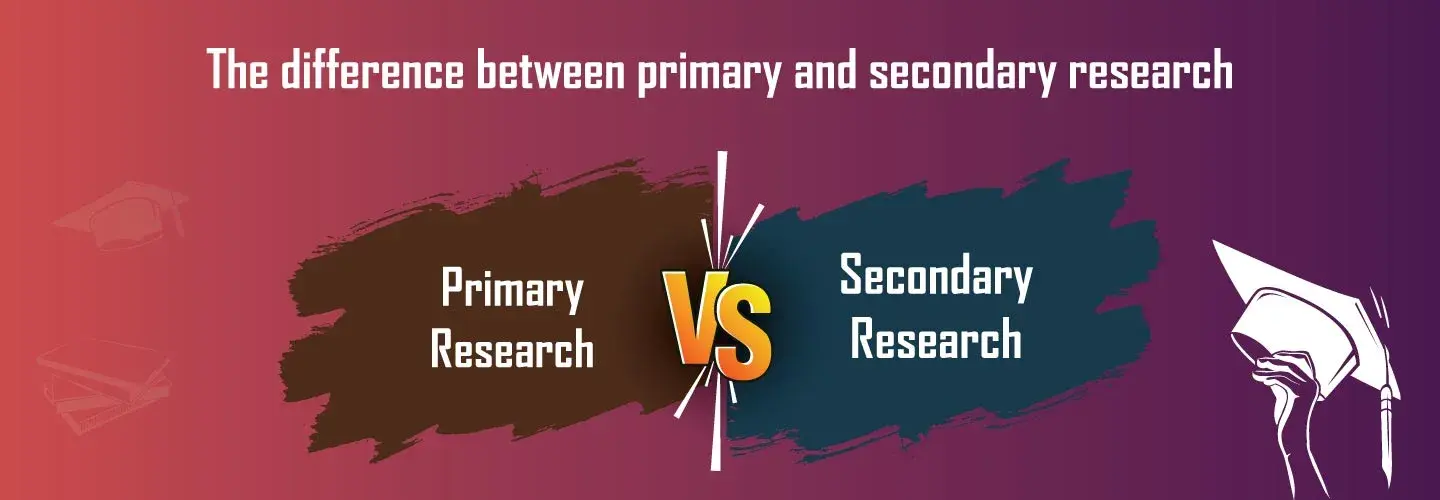The Difference Between Primary and Secondary Research
Aug 25, 2025

Research is a systematic process of gathering and interpreting information to answer questions, problems, or new knowledge. Research is categorized into two parts in business, academic, scientific, and market contexts that primary and secondary research. Both differ in gathering information and their strengths, applications, and limitations.
Primary and secondary research approaches are used in gathering information and data for various purposes. The two fundamental approaches are primary and secondary. In this blog, we differentiate primary and secondary research. Those two fundamental approaches are exploring their unique strength, and how they work together and to uncover valuable insights. It will help you in your PhD journey. In this article, we provide a comprehensive comparison.
📑 Table of Contents
What is Primary Research?
Primary Research is the process of gathering new, original data directly from the source using methods such as surveys, interviews, focus groups, observations, or experiments. It’s first-hand data collected to address a specific question or problem, offering high control over data quality but often requiring more time and cost.
Example: Interviewing customers to gauge their satisfaction with a new product.
Type of Primary Research?
Survey or Questionnaires:
These collect information from a group by asking structured questions. They can be conducted online, in person, or by mail, and include a mix of open-ended and closed-ended questions to gather opinions, preferences, or behaviours.
Interviews:
These are one-to-one or small group sessions where the researcher asks questions directly to gather in-depth responses. They can be structured, semi-structured, or unstructured. Interviews provide in-depth qualitative insights.
Focus Group:
A moderated group discussion with a small number of participants to explore attitudes, perceptions, and ideas in a dynamic setting, often used for exploratory or evaluative purposes.
Observation:
The researcher directly watches and records behaviours or events in a natural or controlled environment without direct interaction. This helps gather data on actual behaviours rather than reported ones. Types include cross-sectional, cohort, and case-control observational studies.
Experiments:
Experiments involve controlled testing to examine cause-and-effect relationships by manipulating variables and observing outcomes, often in a lab or field setting.
Ethnography:
Ethnography is a qualitative primary research method involving an immersive study of people, communities, or cultures in their natural environment over an extended period. A researcher sometimes interacts, observes, and participates to understand behaviours from the participants.
Diary Study:
Diary studies involve participants recording their experiences, behaviours, or thoughts over time in logs, journals, or digital apps, providing longitudinal qualitative or quantitative data.
What is Secondary Research?
Secondary research process involves gathering and analysing data that has already been collected by others, such as books, journals, websites, databases, or reports. In secondary research, the researcher is not the original collector. The secondary research method of gathering information from existing sources rather than collecting new data. Secondary research is also known as desk research. For example, a scholar writing a dissertation might use secondary research to review historical data on economic trends. Secondary research draws from a wide array of existing sources, which can be internal or external.
Types of Secondary Research?
-
Literature review: A systematic analysis of published academic materials, such as journals, articles, books, theses, and conference papers, to summarise existing knowledge on a topic.
-
Data analysis from the report: Using already collected numerical or statistical data from public or private databases to draw new conclusions or identify gaps and trends.
-
Media and news source: Reviewing news articles, broadcasts, or online media to understand current events, public opinion, or societal trends. Newspapers, news websites, TV archives, blogs. Its strength is timely and accessible, it reflects public discourse.
-
Meta-analysis: Combining and statistically analysing results from multiple studies to draw broader conclusions or identify overall effects. It will increase statistical power and provide high-level insights.
-
Content analysis: Evaluating textual, visual, or audio content to identify patterns, themes, or biases. It is useful for trend analysis and capturing qualitative insights.
The Importance of Primary and Secondary Research
Secondary research process involves gathering and analysing data that has already been collected by others, such as books, journals, websites, databases, or reports. In secondary research, the researcher is not the original collector. The secondary research method of gathering information from existing sources rather than collecting new data. Secondary research is also known as desk research. For example, a scholar writing a dissertation might use secondary research to review historical data on economic trends. Secondary research draws from a wide array of existing sources, which can be internal or external. Primary and secondary research are essential for generating reliable, actionable insights. The strength of primary research is its uniqueness and accuracy, which makes it essential for answering particular or unique topics. Secondary research is essential for establishing studies in the body of existing knowledge because of its effectiveness, scope, and capacity to offer context. Together, they create a strong research framework, ensuring decisions are well-informed, credible, and impactful. Whether to prioritise one over the other or combine both will depend on the research goals, resources, and context, but their combined use often yields the most comprehensive results.
The difference between Primary and Secondary Research
| Primary Research | Secondary Research |
|---|---|
| Original, collected by the researcher | Existing collected by others |
| Generate new data | Analyse existing data |
| Long time required | Short time required |
| High cost | Low cost |
| Best for innovative or niche questions | Background, trends, or broad overview |
| Eg: interviews, experiments | Eg: journal, article, and government reports. |
